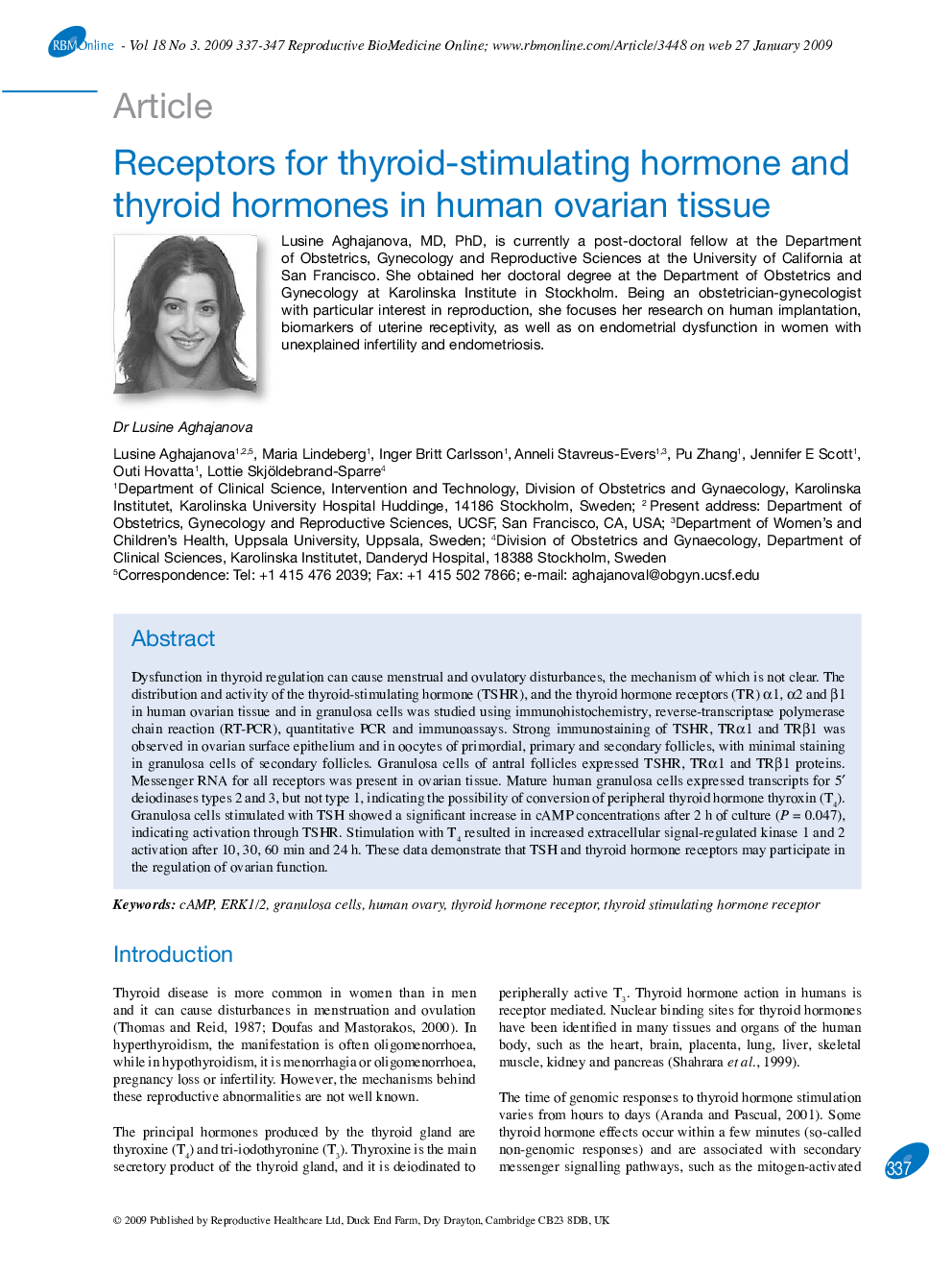| Article ID | Journal | Published Year | Pages | File Type |
|---|---|---|---|---|
| 3972018 | Reproductive BioMedicine Online | 2009 | 11 Pages |
Dysfunction in thyroid regulation can cause menstrual and ovulatory disturbances, the mechanism of which is not clear. The distribution and activity of the thyroid-stimulating hormone (TSHR), and the thyroid hormone receptors (TR) α1, α2 and β1 in human ovarian tissue and in granulosa cells was studied using immunohistochemistry, reverse-transcriptase polymerase chain reaction (RT-PCR), quantitative PCR and immunoassays. Strong immunostaining of TSHR, TRα1 and TRβ1 was observed in ovarian surface epithelium and in oocytes of primordial, primary and secondary follicles, with minimal staining in granulosa cells of secondary follicles. Granulosa cells of antral follicles expressed TSHR, TRα1 and TRβ1 proteins. Messenger RNA for all receptors was present in ovarian tissue. Mature human granulosa cells expressed transcripts for 5′ deiodinases types 2 and 3, but not type 1, indicating the possibility of conversion of peripheral thyroid hormone thyroxin (T4). Granulosa cells stimulated with TSH showed a significant increase in cAMP concentrations after 2 h of culture (P = 0.047), indicating activation through TSHR. Stimulation with T4 resulted in increased extracellular signal-regulated kinase 1 and 2 activation after 10, 30, 60 min and 24 h. These data demonstrate that TSH and thyroid hormone receptors may participate in the regulation of ovarian function.
